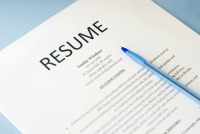Your Resume vs. Your Linked In Profile
 Many of the clients with whom I work usually start out by speaking to me about the need to update their resume and their Linked In profile. Certainly, those are two of the steps we are usually going to take along the way in developing their job search strategy. Communicating who you are as a professional, the skills and talents that you offer, and more importantly how those skills and talents can help a prospective employer in accomplishing what they need done in their firm, are essential parts of the job search process.
Many of the clients with whom I work usually start out by speaking to me about the need to update their resume and their Linked In profile. Certainly, those are two of the steps we are usually going to take along the way in developing their job search strategy. Communicating who you are as a professional, the skills and talents that you offer, and more importantly how those skills and talents can help a prospective employer in accomplishing what they need done in their firm, are essential parts of the job search process.
Over the years of my coaching, I have seen large numbers of resumes, and large numbers of Linked In profiles. Some believe in fact, that once they have the resume completed, all they need to do is post it on the Linked in profile. That, is not a wise thing to do. An individual only gets to have one Linked In profile, (or at least they should have one Linked In profile). They may have several versions of their resume, modifying it for the different jobs for which they apply, and the skill sets and accomplishments they want to highlight to show why they are a strong candidate for a particular job opening.
I look to communicate with my clients the following when we develop their written communication that defines them as a professional at this point of their career. First, their resume is a history of their professional past. It is a document that is best written from a third person perspective, as if someone else is speaking about them and what they have done in their career. The resume is not a rehash of the job description of the positions you have done in your career. It is not just a list of tasks or skills needed in those job roles, (although those skills can be highlighted at appropriate places on the resume). The resume is a document that should first summarize who you are as a professional. It next highlights those key skills or core competencies that show what you bring to the hiring company, particularly as it revolves around working with fellow staff, customers, or outside vendors. It should then describe you in your job roles from AN ACCOMPLISHMENT PERSPECTIVE. What were the Problems or Challenges that you faced, what Actions did you take to address them, and what was the positive Result of your actions for your company or the customers that you served.
A Linked In profile on the other hand is representing not only who you are now, but who you are looking to be as you move forward in your career. Best said, your Linked In profile is YOUR PROFESSIONAL PRESENCE on SOCIAL MEDIA. As such, it often is best conveyed from a first-person perspective. In particular, the upper half of the Linked In profile allows you several opportunities for others to connect with you. Linked In wants you to provide a professional photograph of yourself. It also allows you to provide you a background picture behind that photo. Perhaps it is you in action doing what you do. Or, it may be a picture that aligns well with your profession. Some choose to provide a picture of something that is meaningful to them, (perhaps the city where they live, or a scene which sets an understanding of what is important to them as a human being). The key with both pictures is to draw the reader of the profile into it to learn more about you.
Linked In allows one to introduce themselves through an About Section. That introduction, when done well, is written in the first person. It helps the reader understand the problems you solve, your passion for working with those that need those problems or issues addressed, and perhaps a bit about your journey to this point in your career. It is looking to make “a personal connection” with the reader. Further down the Linked In profile you have an opportunity to share your job experience, (and again, what you have accomplished at each job role). However, you are also encouraged to include Volunteer causes that mean a lot to you, the skill sets you possess, and recommendations from those who can speak of what it is like to work with you.
Your resume and your Linked In profile should work in tandem to present you to others. Yes, they should tell a consistent story. To have experiences and items on one document, that are not consistent with the other is going to be a cause for concern to the reader. Additionally, when done well, and with a lot of thought in terms of how the two distinct documents are presenting you, they become a springboard for the verbal communication you will have with others when speaking to them about career opportunities. The accomplishment stories which you are able to present on your resume and your Linked In experience, provide a foundation for the examples you will provide to others in interviews and discussions you will have with them. A particular interest that shows up on your Linked In profile could trigger a connection with another speaking to you that will help to form a personal bond that is all so important in determining if you are the right fit for their job opening.
Therefore, the next time you look at your resume and Linked In profile, ask yourself, are they presenting you appropriately? Are they connecting with the reader in the way that they are meant to do so? Am I updating my resume to be in line with the specific position for which I am applying? And, is my Linked In profile presenting me not only as a professional, but as the person behind the accomplishments and skills that you will get to bond with if you look to indeed connect with me or possibly hire me.
